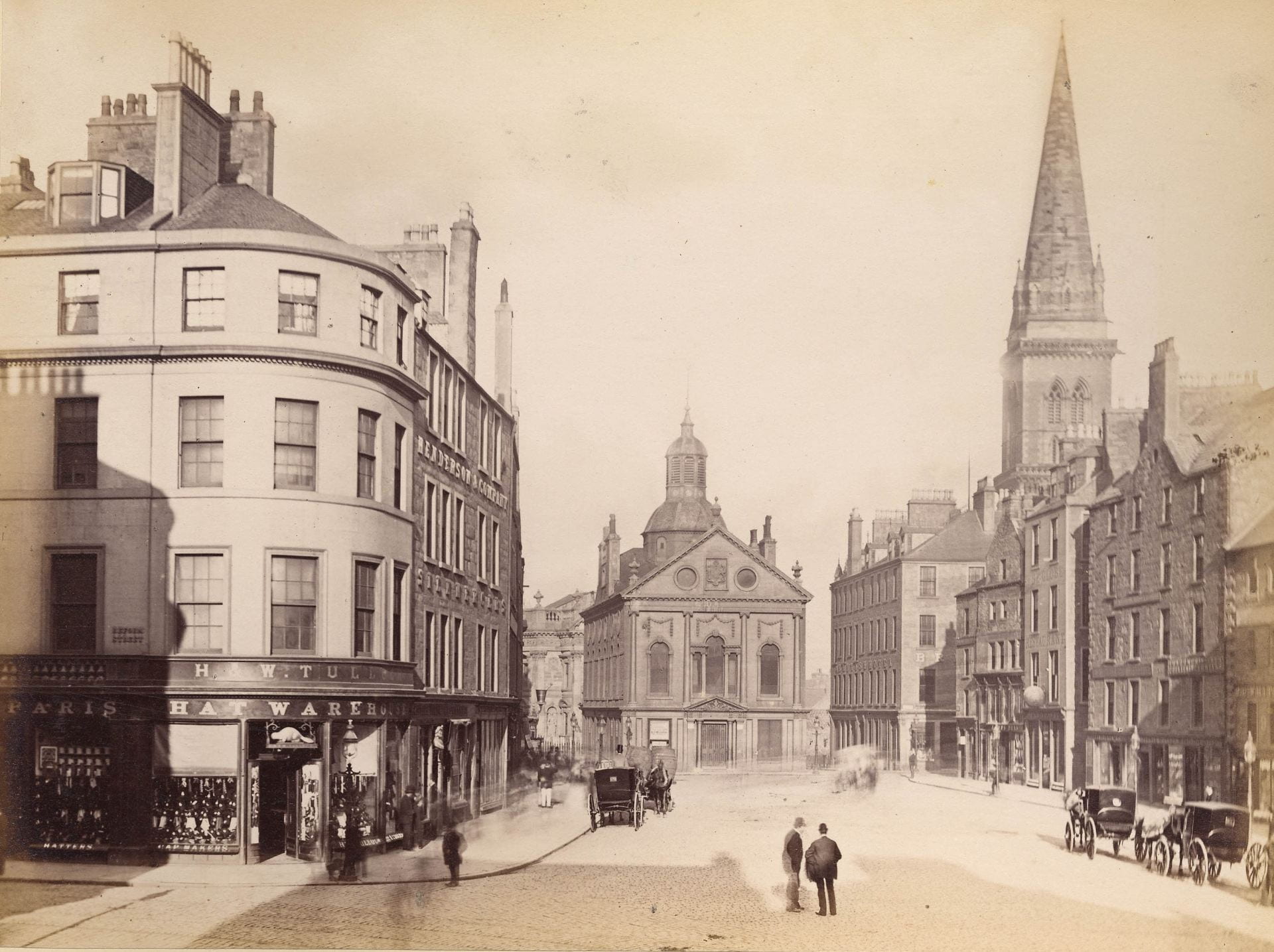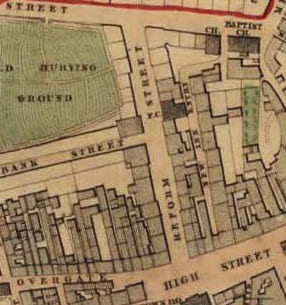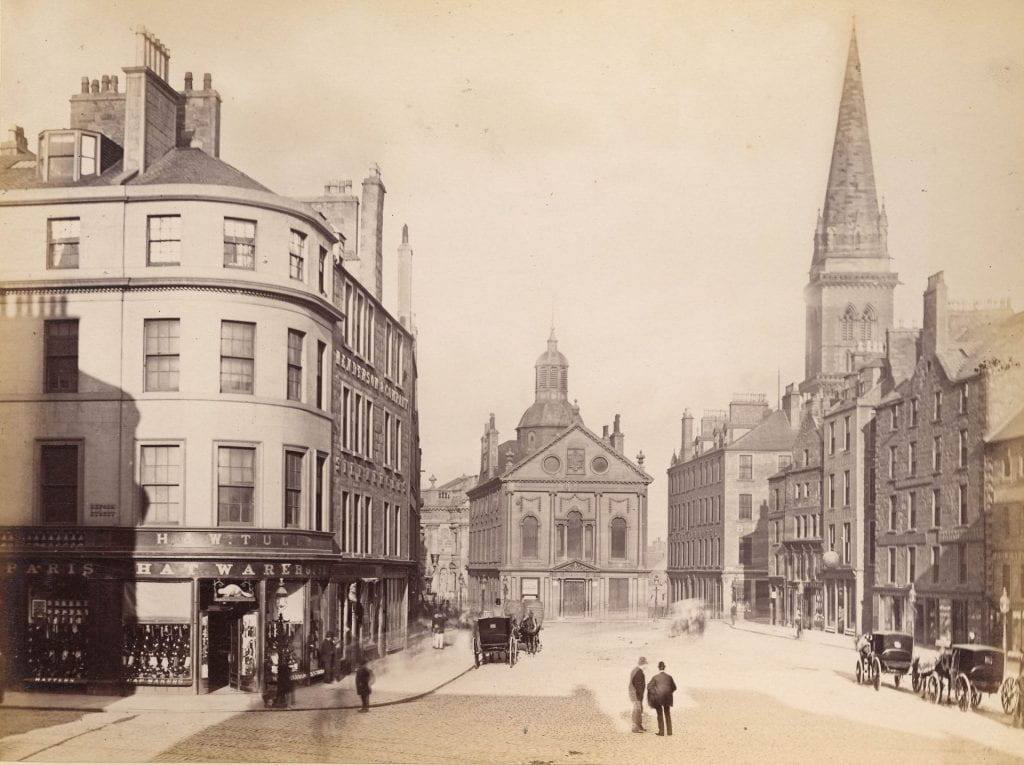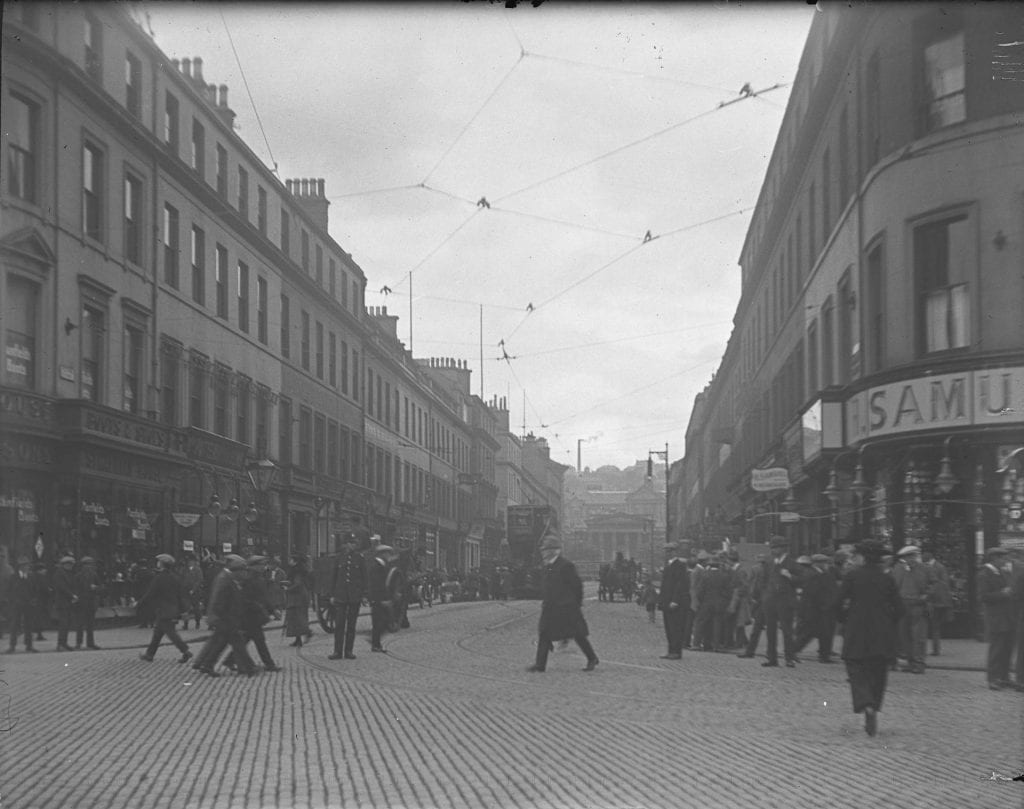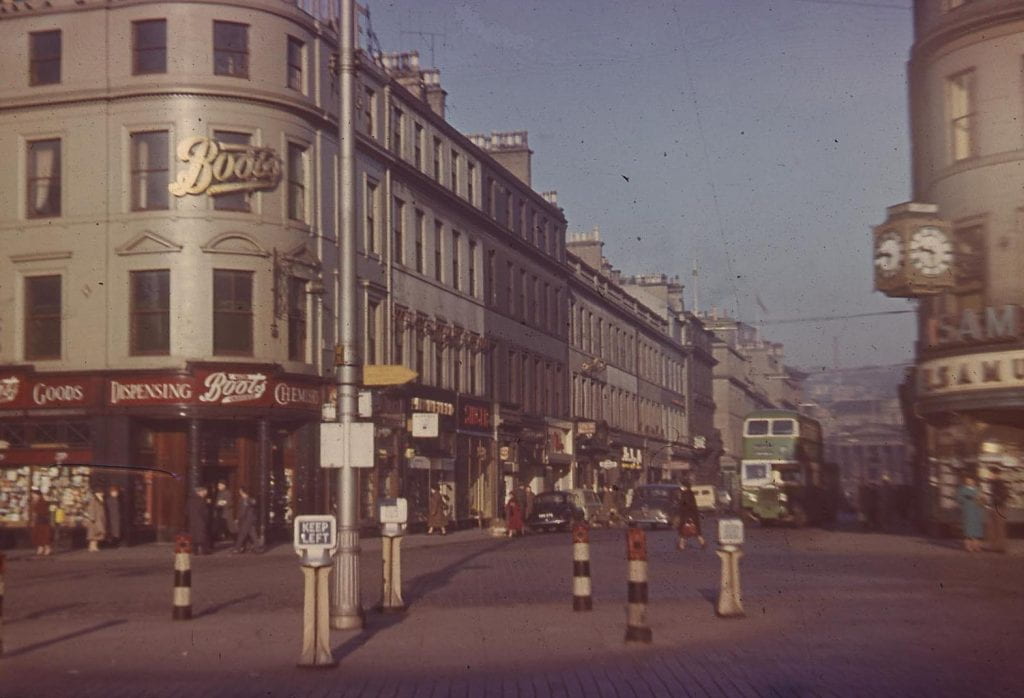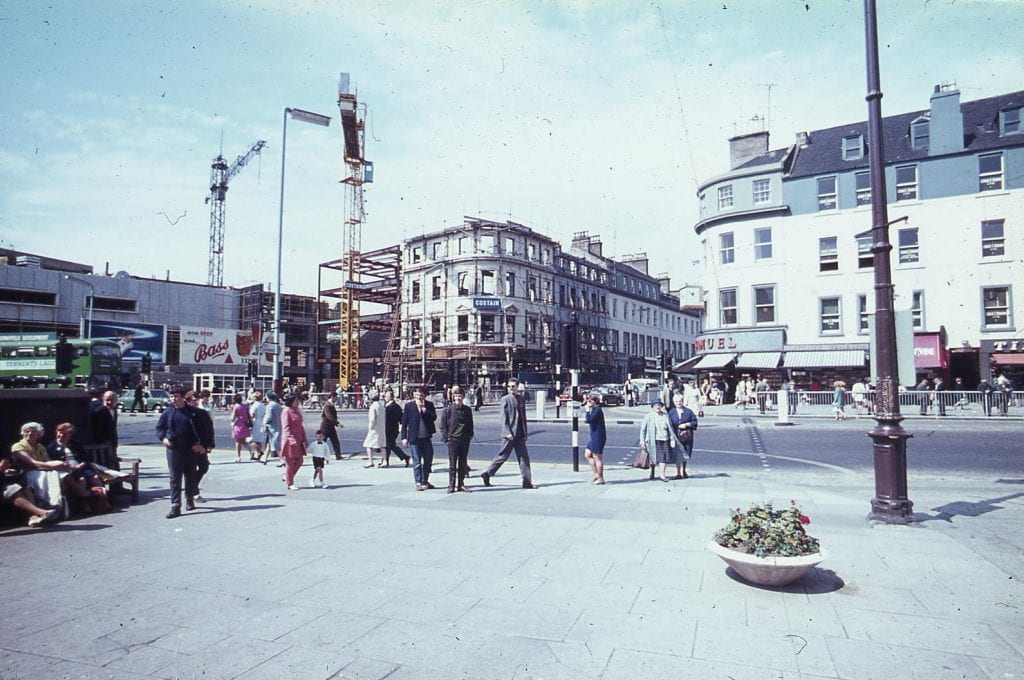The University Archives continues its series looking at the changing face of the City by focusing on Reform Street. The junction of Reform Street and the High Street is one of the most familiar scenes in central Dundee, with the clock on the building of what was H. Samuel, the jeweller, being a well-known meeting point for many for over a hundred years.
Reform Street was built to link the High Street to the meadow lands to the north at a time when Dundee was just beginning its industrial expansion and was opened in 1833. It took its name from the Great Reform Act of 1832, which changed the British electoral system, strengthened the House of Commons and enjoyed much support in Dundee. Despite the spread of the City, by the time of Edward’s map of 1846, the street still lacked many buildings at its northern end (the empty squares show planned, but not built, properties).
One of the earliest photographs we hold of the area was taken in the 1870s and looks towards the old Trades Hall, the elegant structure designed by Samuel Bell which was demolished in 1878 at just over 100 years old. The corner itself looks much as it does today, although it is strange to see a photograph of this site with a hatter rather than a jeweller.
H. Samuel had previously had a shop elsewhere in the High Street, but in April 1909 moved to “more commodious premises” at 1 Reform Street. The long presence of Samuel’s led to the area being known as Samuel’s Corner, but another name was “Duffers Corner”, due to the fact it had a reputation for people arranging to meet someone there, only to stand them up. In 2020 the Samuel’s name disappeared from Dundee, but the shop was taken over by another jeweller, Chisholm Hunter. This photograph was taken in 1922 and shows H. Samuel as a well-established feature of the corner.
On the opposite corner (often known as Boots’ Corner) the building was originally known as Strathtay House and housed a variety of stores until Boots moved in. The photograph below is from 1957.
While it looks largely unchanged, Professor Bell’s photograph from 1968, below, reveals that the inside of the building was largely demolished when the Overgate was redeveloped, and a new building erected behind the old facade.
